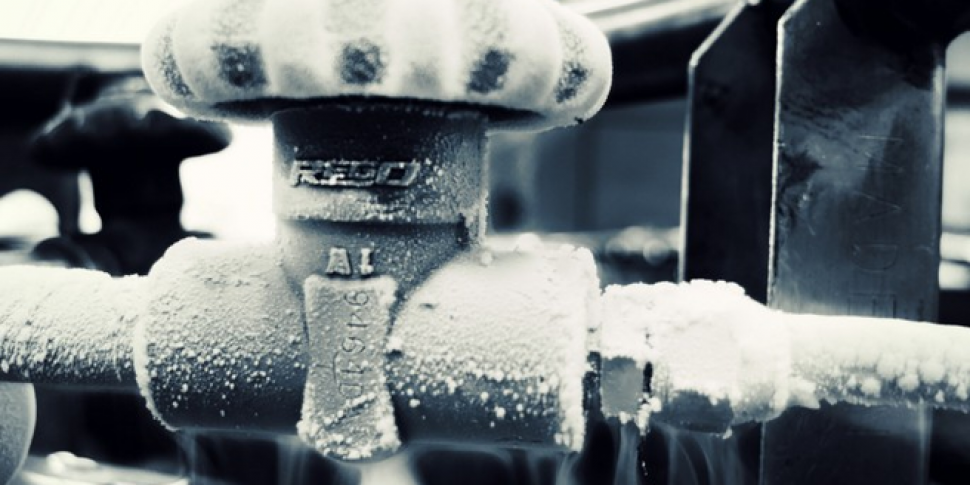A 14-year-old British girl, who lost her battle to a rare form of cancer, has made headlines for the battle she did win, having been victorious in a historic legal case to have her remains cryogenically frozen. The teenager, from the London area, had spent months researching how she could be frozen, with Justice Peter Jackson saying “she died peacefully in the knowledge her body would be preserved in the way she wished.”
What was once speculative science fiction has now become speculative science, a mysterious and murky world of science that first emerged in the 1960s, with the tantalising promise of eternal life – provided they can get it going again when they thaw you out.
In the history of mankind, cold has never been our friend. The lowest temperature ever recorded on the planet, a teeth-chattering -88 ºC at Antarctica’s Vostok Station, is a balmy 62 ºC warmer than the deep cold of the cryogenic range, which starts at -150 ºC and extends as far as -273 ºC. But the thermometer’s mercurial line doesn’t even need to dip below zero for the cold’s sting to pose a threat to the body, with the freezing point of water, the substance making up much of the human body, exposing the extremities of our hands, feet, ears and nose to irreversible tissue damage caused by frostbite. How then has the deepest freezes managed to become synonymous with bodily preservation and reanimated life?
To answer that, we need to first understand the significant distinction between cryogenics and cryonics; the former is the science of exploring how extremely low temperatures result in remarkable changes in the behaviour of matter, both organic and inorganic. This branch of physics investigates how approaching absolute zero, the point at which no heat can possibly exist within a body, slows down the movement of molecules to the point of almost static. When this happens in inorganic materials, things like thermal conductivity, electrical conductance, strength and malleability are changed in way that are of commercial and scientific importance.

John Day, a member of the Bay Area Cryonics Society, poses in 1974, in Emeryville, California, with a tank which the group,says contains the frozen dead bodies of two stroke victims how had hoped to be resurrected in the future and cured of what killed them [AP Photo/Roberto Borea]
As such, cryogenics is a legitimate science, which affects things as varied as the transport of liquefied natural gases, particle acceleration, superfluidity, and medical science; the removal of tonsils, warts, and haemorrhoids using super cold scalpels is a type of cryogenics.
Cryonics is the name applied to a technique which applies the concepts of cryogenics to preservation of bodies, the technique of deep-freezing a person who has died from an incurable disease in the hope of science catching up and one day delivering a cure in the future.
While cryonics has become associated with science fiction, the concept is, at least, based on natural evidence that cold can preserve the life of a living creature. In Alaska, for instance, native flora and fauna have adapted over millions of years to survive the difficult living conditions of the American state’s brutal winters. The tardigrade, which has baffled the scientific community since 1773, is a water-dwelling, eight-legged insects known for its almost unearthly resilience – they can withstand temperatures ranging from -272 ºC to the extreme heat of 150 ºC, pressures almost six times greater than the deepest ocean trenches, radiation as does hundreds of times higher than those that would kill a human being, and even the vacuum of outer space. They’re also of particular interest in cryonics because they can go without food or water for more than 30 years, drying out to the point where their bodies constitute less than 3% water, only to then be rehydrated and start foraging a reproducing again.
The problem with deep freezing human tissues, ethics aside, is how to limit the damage. Experiments with microscopic photography have shown that when a body is exposed to low temperatures, the liquids inside cells and bloody vessels freeze into crystals, piercing ice that damages them beyond the point of repair.
How, then, can tardigrades endure the extreme cold without their internal organs being punctured by ice? It turns out that tardigrades are capable of producing glycerol, a key ingredient in anti-freeze, to defend themselves from the damage. And scientific laboratories have followed the micro-animal’s lead, using glycerol to preserve a number of different organic elements, such as blood and sperm cells. These processes have also been used in the preservation of fertilised human embryos, which are protected by a chemical known as dimethtyl sulfoxide, DMSO, which allows the embryos to enter a state of suspended animation that can extend for as long as a decade.
Another important distinction to remember when talking about the cryonic state the 14-year-old British girl fought to win is that she is legally dead. While cryogenics is often used to suggest that a person will be preserved in suspended animation and brought back in the future, this is a popular misunderstanding. Based on our current technological abilities, science does have the capacity to freeze and preserve a human body for years, but not to revive them. The person must have legally died first, meaning that he or she has no heartbeat. There is nuanced understanding of death here, as legally dead is not the same as medically, as a person can still be considered clinically alive if there is still brain function.

Boston Red Sox star Ted Williams knocks the ball out of Fenway Park in 1960 to score a home run. When he died 41 years later, he became the most famous person to ever undergo cryonic preservation [AP Photo, File]
There are currently three commercial organisations the offer cryonic preservation, one in Russia and two in the US, which are keeping the frozen corpses of men and women who have been pronounced legally dead by a registered medical professional. Faced with incurable illnesses, their dying wish was to have their body kept in specially-designed cryonic pods in the hope of one day opening their eyes, decades in the future, to see a scientifically advanced world that offers them another shot at life.
But a second shot at life does not come cheap. According to Alcor Life Extension Foundation, a cryonics institute based in Scottsdale, Arizona, whole body preservation comes with a price tag of a minimum of $200,000 (€189,000). Those unwilling to meet their maker but bound by budgetary constraints can opt for neuropreservation instead, the preservation of just the brain. Customers availing of this do so in the hope that future scientists will harvest cells to heal severed spinal cords, regrow lost limbs, and even regenerate the body’s organs. Typically all brain material from the sixth cervical vertebrae up is preserved, setting you back a minimum €75,000.
The science remain controversial and, significantly, unproven. But facing your own mortality, especially at a young age, is not a prospect most people would want to consider.
“I have been asked to explain why I want this unusual thing done,” the 14-year-old girl wrote. “I don’t want to die but I know I am going to die.
“I think being cryo-preserved gives me a chance to be cured and woken up – even in hundreds of years’ time. I don’t want to be buried underground. I want to live and live longer and I think that in the future they may find a cure for my cancer and wake me up.
“I want to have this chance. This is my wish,” she said.









